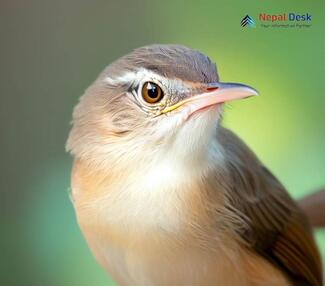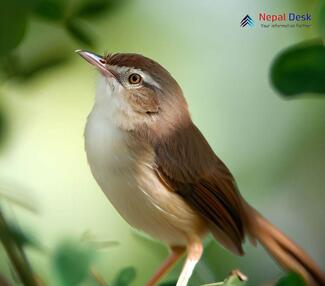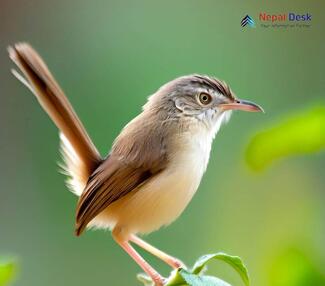The Plain Prinia (Prinia inornata) is a small and delightful bird species commonly found in Nepal, particularly within the wetlands and grasslands of the Terai region. This charming creature, also known as the "Plain Wren-Warbler" or "White-browed Wren-Warbler," is well-loved by birdwatchers and nature enthusiasts alike. In this article, explore the fascinating details of Plain Prinia's appearance, habitat, behavior, and significance in Nepal's rich biodiversity.
Appearance and Physical Characteristics
The Plain Prinia is a tiny bird with a length of around 13-14 cm and a weight of around 6-10 grams. At first glance, you might be mesmerized by its strikingly white eyebrow set against an otherwise plain brown body. It also has a long tail that appears to constantly flick as they move about. Males bear rounded wings during the breeding season to showcase themselves while competing for mates.
Habitat Preferences
Nepal's Terai region, which includes both wetlands and grasslands, serves as the ideal habitat for the Plain Prinia. These birds thrive in tall grasses along ponds, riverbanks, marshes, and even cultivated land like paddy fields. In fact, they can frequently be spotted perching on grass stems or flitting among low bushes.
Behavior and Diet
Plain Prinias are quite active during the day, effortlessly hopping from one grass stem to another while scouring for insects to eat. These spritely little birds are insectivores which means their diet primarily consists of insects such as small caterpillars, beetles, flies, and various larvae.
Song and Call
One of the most distinctive characteristics of the Plain Prinia is its song – an unmistakable, melodious series of notes that can be heard echoing across their habitat in Nepal. These vocalizations play a crucial role in communication among their own kind, whether it's for attracting mates or warning of potential danger.
Breeding and Nesting
Breeding season in Nepal typically spans from May to September, with both male and female birds helping to construct an elaborate, oval-shaped nest using grass and plant fibers. The cozy nest is then lined with feathers and spider webs for added insulation. Females lay 3 to 5 eggs that take around 12 days to hatch. Once hatched, the fledglings rely on both parents for feeding and protection until they are ready to fly.
Conservation Status
The Plain Prinia follows a thriving population trend throughout its range, which includes countries like India, Pakistan, Bangladesh, and Myanmar. Their widespread presence and adaptability make them a symbol of ecological vitality. Even though they hold the 'least concern' status per the IUCN Red List, it's important to maintain the grassland ecosystems essential to their survival.
The existence of the Plain Prinia is a testament to Nepal's diverse wildlife habitats. As you explore the country's natural beauty or delve into birdwatching activities within the grasslands and wetlands, make sure to listen for the captivating song of this unassuming yet charming bird species. Although small in size, their unique appearance and presence hold significant importance in maintaining the ecological balance of Nepal's extraordinary landscapes.




